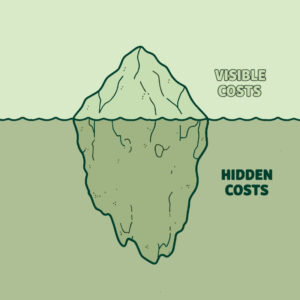.
As PPC manager at boxChilli, I’ve spent a considerable amount of my career understanding Pay-Per-Click advertising, cookies, and the evolving technicalities. In 2024, our industry is about to undergo one of the biggest changes in recent memory.
The term ‘Cookiepocalypse’ has been making rounds in our industry, and for good reasons. It signifies a pivotal change in how digital tracking, advertising, and privacy will work going forward.
This shift has profound implications not just for advertisers but for users and web developers alike. Through this article, I’ll take you through what the Cookiepocalypse entails, the background, and why it’s a topic that you can’t afford to ignore.
Table of Contents
What Are Cookies?
Before we go into the Cookiepocalypse, it’s essential to grasp the concept of cookies in the first place. You can imagine cookies as tiny digital breadcrumbs left behind as you navigate through the internet. These breadcrumbs, or small pieces of data, are collected by the websites you visit and stored locally on your device by your web browser.
These cookies remember your preferences (such as your language settings, items in your shopping basket, or your login details) ensuring that your journey through the web is as seamless and personalised as possible.
But for those of us in the PPC world, cookies are even more important than that. This is because they are the backbone of targeted advertising strategies. For instance, have you ever wondered how an ad for a product you just searched for pops up on another site, seemingly following you across the internet? Cookies are the culprits!
Cookies track your digital footprints across different sites, enabling advertisers to piece together your interests and preferences in order to serve you targeted ads based on your interests. This significantly increases the likelihood of conversion.
What is the Cookiepocalypse?
The term ‘Cookiepocalypse’ might sound like a dramatic end-of-days scenario for cookies, and in a way, it is! At least for the digital advertising world as we know it. This term has been coined to describe a significant shift that’s occurring in digital: the gradual phasing out of third-party cookies.
For decades, these tiny pieces of data have been the linchpin of digital advertising, allowing businesses to track user behaviour across the web, tailor marketing strategies, and deliver personalised ads to potential customers. This era is coming to an end.
The Cookiepocalypse is spearheaded by major tech companies, most notably Google, which announced its intention to eliminate support for third-party cookies in its Chrome browser in 2024. This decision reflects a broader industry movement towards enhancing online privacy and data protection for users. With Chrome holding a significant share of the browser market, Google’s move is expected to have a profound impact, effectively dismantling the current infrastructure of digital tracking and advertising in web browsers.
Privacy concerns
But why this sudden shift? The driving force behind the Cookiepocalypse is the growing concern over privacy among internet users worldwide. People are becoming increasingly aware of how their personal information is collected, shared, and used by companies. High-profile data breaches and the misuse of personal data have led to a demand for greater transparency and control over personal information.
In response, regulations such as the General Data Protection Regulation (GDPR) in Europe and the California Consumer Privacy Act (CCPA) in the US have been enacted, giving users more power over their data.
The Cookiepocalypse is about rebalancing the scales between digital advertising and respecting user privacy. For advertisers, marketers, and web developers, it represents both a challenge and an opportunity to evolve and adopt more privacy-conscious practices in a rapidly changing digital landscape.
Why Should You Care?
For Users
The primary benefit for users is enhanced privacy and control over their personal information. The decline of third-party cookies means less of your browsing history is tracked and sold to advertisers without explicit consent. This is a significant step towards a more private web experience.
For Advertisers and Marketers
For those of us in advertising and marketing, the Cookiepocalypse presents both challenges and opportunities. The challenge lies in losing a tool that has been fundamental in targeting and retargeting ads effectively. It forces us to rethink our strategies and find new, privacy-compliant ways to reach our audience.
However, it also opens up opportunities to innovate and adopt technologies that respect user privacy while still delivering value to advertisers. Solutions like Google’s Privacy Sandbox initiative, which aims to develop privacy-preserving alternatives to third-party cookies, are part of this evolution.
For Web Developers
Web developers will need to adapt to these changes by implementing new standards and technologies designed to protect user privacy. They’ll play a critical role in developing and integrating these new tools into websites and advertising platforms.
Navigating the Post-Cookie World
So, how do we navigate this new landscape? Here are a few strategies:
First-Party Data Emphasis
The impending demise of third-party cookies means we’re about to enter a new era where first-party data takes centre stage. First-party data is information collected directly from your audience or customers through your own, digital marketing channels, such as your website, mobile app, CRM system, or social media platforms. This direct line of data collection offers a host of insights into customer behaviour, preferences, and engagement patterns, making it invaluable for crafting personalised marketing strategies and enhancing user experience.
The reliance on first-party data is about to become a necessity. This form of data collection is considered more trustworthy and relevant because it comes straight from the source – the customers themselves. When these first party cookies are obtained with explicit consent, it aligns perfectly with global privacy regulations like GDPR and CCPA, ensuring that businesses respect user privacy while still gaining actionable insights.
However, the requirement for user consent showcases the inherent weakness of first-party data. As privacy concerns grow and users become more selective about sharing their data, we may witness a decline in the overall volume of data available to businesses. Users are now more empowered and informed, often choosing to opt out of data tracking mechanisms or to limit the amount of personal information they share online.
This shift necessitates a more nuanced approach to data collection, where businesses must not only offer clear value in exchange for user data but also ensure the utmost levels of transparency and security. The challenge lies in balancing the need for detailed customer insights with respecting individual privacy preferences, which may result in businesses having to navigate with less data than before. In my view, the key will be in emphasising the quality of data over quantity in building effective marketing campaigns and customer experiences.
Transitioning to a first-party data-centric approach requires businesses to invest in robust data management systems, enhance their user engagement strategies to encourage data sharing, and foster a culture of transparency and trust. By doing so, companies can not only comply with privacy laws but also build deeper, more meaningful relationships with their customers. That can only be a good thing.
Google Topics
Google’s Topics framework is part of its Privacy Sandbox initiative, designed to address the challenges posed by the phasing out of third-party cookies while still enabling personalised advertising. The Topics framework aims to provide a privacy-preserving mechanism for interest-based advertising by categorising users’ browsing habits into a broad set of topics, such as “Food & Drink” or “Travel,” to target ads without the need to track individual users across the web.
Under this system, the browser itself determines a handful of topics that represent a user’s interests based on their browsing history over the past week. These topics are then stored locally on the user’s device and can be shared with websites and advertisers for ad targeting purposes. Importantly, the Topics framework does not involve any external servers, including Google’s, to classify or store this data, significantly reducing privacy risks.
By focusing on broad topics rather than specific browsing behaviour, Google’s Topics aims to strike a balance between protecting user privacy and the needs of advertisers for effective targeting. This approach allows for relevant advertising without compromising the user’s anonymity, addressing privacy concerns while maintaining the economic viability of the web ecosystem.
What is Google’s Privacy Sandbox?
Google’s Privacy Sandbox is an initiative aimed at developing a set of open standards to fundamentally enhance privacy on the web, while still giving companies and developers the tools they need to build thriving digital businesses. Announced as a response to widespread concern over privacy and the phasing out of third-party cookies, the Privacy Sandbox seeks to create a web environment where users can enjoy privacy-preserving online experiences without compromising personalised content and advertising.
The Privacy Sandbox proposes a series of technologies and frameworks designed to protect users’ privacy while still allowing for targeted advertising and measurement. It introduces the concept of trust tokens to help combat fraud and distinguish between bots and real users without tracking individual activity across sites.
The Privacy Sandbox is Google’s attempt to reconcile the need for user privacy with the economic realities of the web, where advertising plays a critical role in funding content and services. By developing these new technologies in collaboration with the broader web community, Google aims to set new standards for privacy, security, and advertising in a post-cookie world.
Diversifying Marketing Channels
In response to the Cookiepocalypse, businesses must consider diversifying their marketing strategies to reduce over-reliance on PPC ads. One of the most effective and sustainable alternatives is investing in Search Engine Optimisation.
SEO involves optimising your website and content to rank higher in search engine results pages (SERPs) for relevant keywords, thereby increasing organic traffic without the direct cost associated with PPC advertising.
The transition towards SEO not only serves as a hedge against the diminishing returns of cookie-dependent advertising but also aligns marketing efforts with a long-term vision for brand visibility and credibility. SEO strategies focus on creating high-quality, relevant content that addresses the needs and questions of your target audience. By improving the user experience on your website you enhance the likelihood of engaging and retaining visitors.
SEO is intrinsically linked to understanding your audience’s intent and delivering value through your online presence. By investing in SEO, businesses can drive sustainable growth, foster trust with their audience, and establish a solid foundation in a post-cookie world.
Final Thoughts
The Cookiepocalypse is a significant shift towards a more privacy-conscious web. While it poses challenges, particularly for those of us in digital advertising, it also offers a chance to build a more transparent, trust-based relationship with our users. By adapting to these changes and embracing new, privacy-compliant technologies, we can continue to deliver effective advertising in a way that respects user privacy.
As we navigate through this transition, staying informed and agile is going to be the key. The end of third-party cookies is not the end of effective digital advertising. I see it as the beginning of a new chapter that rightly prioritises user privacy and offers fresh avenues for marketers.





